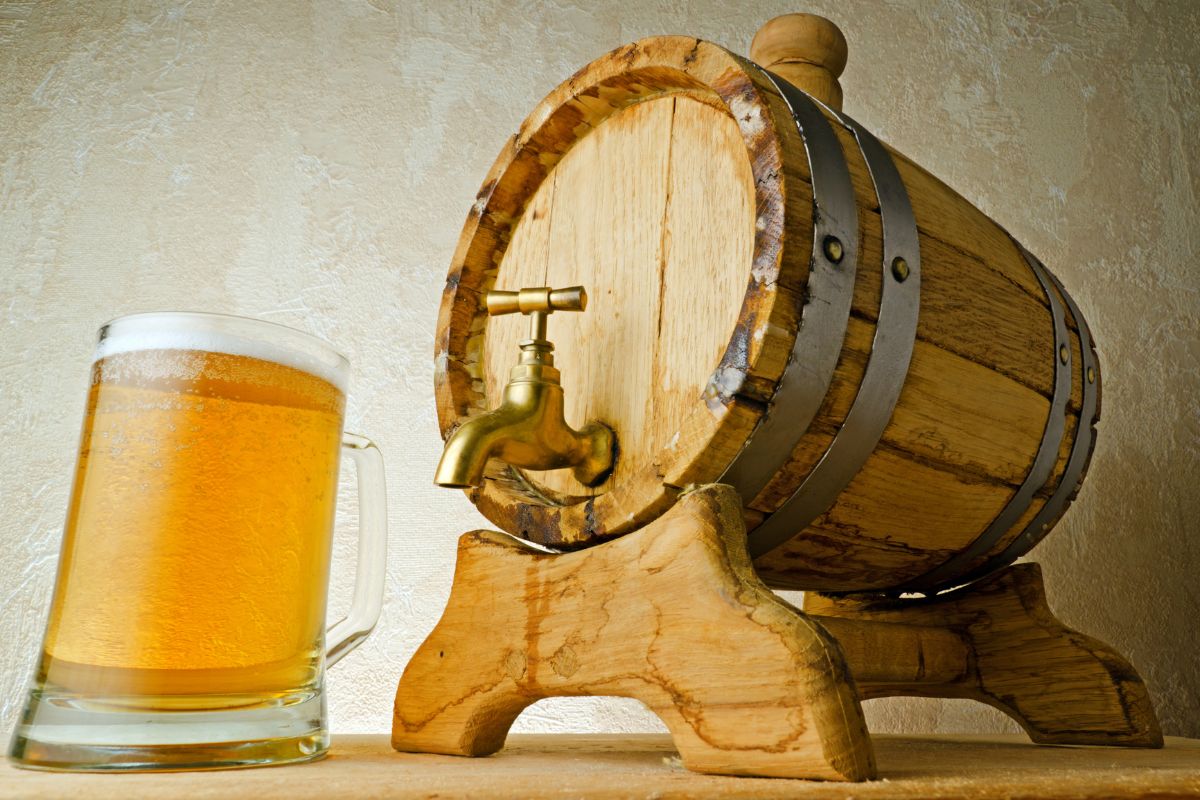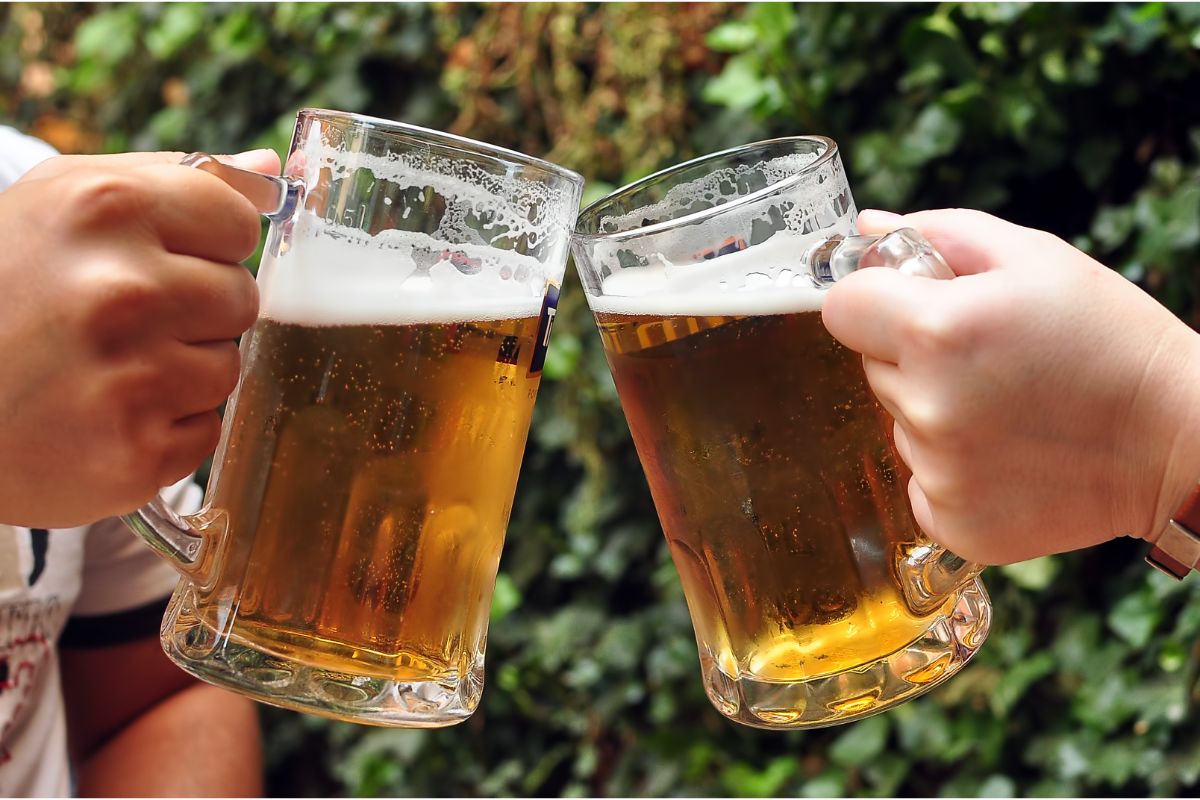Do you want to know how to carbonate your beer while it’s in a keg? In this article, we’ll help you find the best way to carbonate your beer using several different methods.
Carbonating beer in a keg is a little more complicated than if you did so in a bottle, so you must pay attention to the different methods and which works best for you.

Set And Forget
One of the safest and simplest ways to carbonate beer (see also: Is Beer Carbonated?)in your keg is by using the set-and-forget method.
While it does take more time, you don’t have to risk over-carbonating your beer, as it’s easier to get carbon dioxide into beer than out of it.
All you need to do for this method is to set the pressure on your kegerator. You must usually chill your beer down to the serving temperature you desire.
Most kegerators are set at 9 or 11 psi, which should carbonate a beer over the course of a week.
Semi-Speed Carbonation
You can carbonate at a faster speed after you cold crash (see also: How To Cold Crash Beer?)your beet and set your keg’s pressure at 30 psi over two days. You can then return to the usual pressure and wait for another few days to get more carbonation.
It’s best to be careful with this method. If you forget your beer at 30 psi, the carbon dioxide will reach a higher volume, reducing the time you need by several days.
Rapid Force Carbonation
The rapid force carbonation method is when you apply a high level of carbon dioxide at roughly 30 to 50 psi.
However, you don’t only increase the carbonation, but you must roll, shake, and dodge your keg for roughly one to three minutes, depending on the temperature of the beer and the pressure it’s set at.
By moving the keg, the beer will absorb the carbon dioxide quicker as it increases the surface area of the beer.
You should be able to hear the gas hiss through your kegerator as the beer bubbles. There are several variables that will determine how long you should do rapid force carbonation.
You must usually find the right result through the process of trial and error.
To begin, you should turn your kegerator to 35 psi and shake your keg vigorously for roughly 45 seconds. Allow it to set for 15 minutes, and taste it.
It’s essential that you take notes when you use this method, as you need to be consistent for each keg.
The downside of this method is that your keg may be prone to over-carbonation, especially if you’ve never brewed a keg before.
The best thing about this method is that this can be the quickest way to carbonate your keg. However, you still need to be patient.

24 Hour Carbonation
You can also carbonate your keg within 24 hours with a 24-hour carbonation method. It’s one of the most common practices when you need to carbonate your beer in a keg.
It’s one of the quickest methods and less risky than the rapid force carbonation method.
All you need to do is place your keg in your kegerator and connect it to your carbon dioxide. Turn it so it’s between 30 and 35 psi, and allow your keg to sit for 24 hours.
Once that time has passed, you can reduce the pressure to between 10 and 12 psi and purge any extra carbon dioxide to serve immediately, or let it settle for two or three days to fully carbonate.
The beer will naturally absorb the extra carbon dioxide in these next few days if it rests at the serving pressure. If you’re also concerned about the hop aroma, this can be a great way to purge that scent from it.
While it might not be fully carbonated after 24 hours, after a few days at serving pressure, it should be fully complete for you to serve.
Serving Pressure Carbonation
The slowest and most natural form of carbonation is the serving pressure carbonation method. However, while it is the slowest, it also offers the best results.
It is also one of the simplest methods to ensure you get perfectly carbonated beer each time, as long as you don’t mind waiting.
You only need to put your keg in the kegerator and connect it to the carbon dioxide. Turn your kegerator on so it’s at 30 psi, and seal your lid.
Once you seal your lid, reduce the pressure to your serving pressure and return to it within a week or two.
We recommend waiting two weeks so then your beer will be fully carbonated in your keg.
Final Thoughts
While finding out how to carbonate your beer can feel challenging, it’s not impossible. You just need to find the right system that works best for you.
Everyone has a preferred method, and you now have all the information to find the best way to carbonate your beer(see also: How To Carbonate Beer).
If you would like to learn more about beer, the carbonation process, and any other brewing (see also: Brewing 101: What Is A Whirlpool?)queries, feel free to check out our website.
We have all the information you need to answer all your burning questions when making homebrew.
Frequently Asked Questions
You can naturally carbonate your keg by adding the right amount of sugar and allowing it to keep warm for two weeks. However, most brewers prefer to force the carbonation to speed up the process.
While you can carbonate a warm keg, it takes longer than carbonating a chilled one. Chilled beer will accept carbon dioxide quicker than warm beer at room temperature.
Many homebrewers use corn sugar to prime their beer. We recommend carbonating between ⅔ and 1 cup for each 5-gallon batch. ⅔ of a cup of corn sugar provides a soft carbonation, while a full cup produces a fizzier brew.
- StockHouseBrewing.com is being acquired by MomentumBrewHouse.com - October 24, 2023
- MomentumBrewHouse.com Acquires EmpiricalBrewery.com - August 31, 2023
- How Many Calories Are In A Bottle Of Beer? - May 24, 2023
